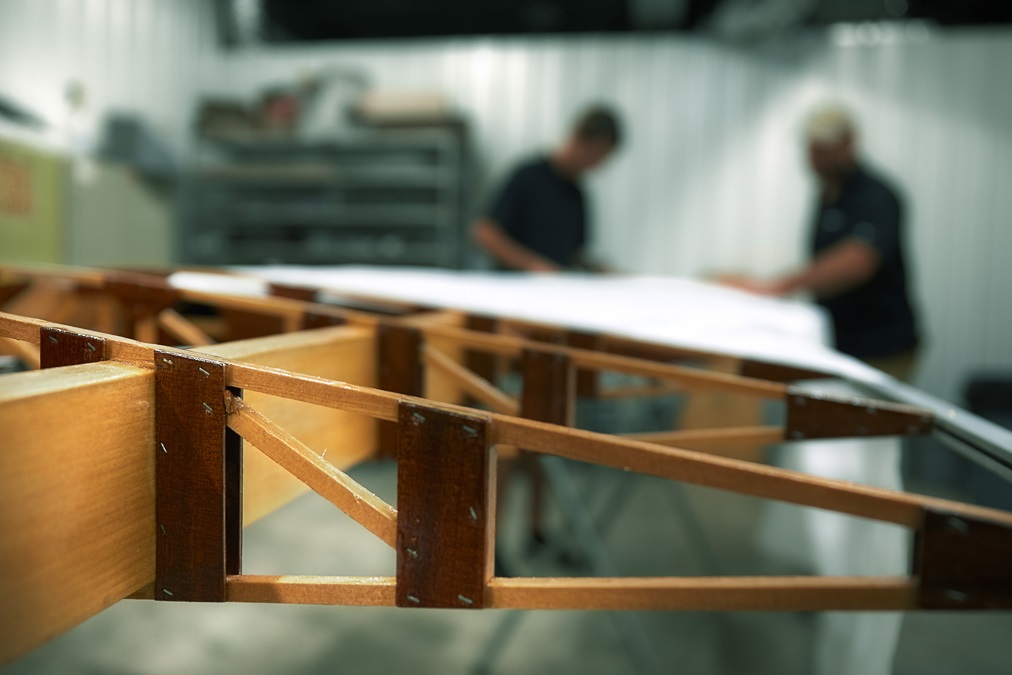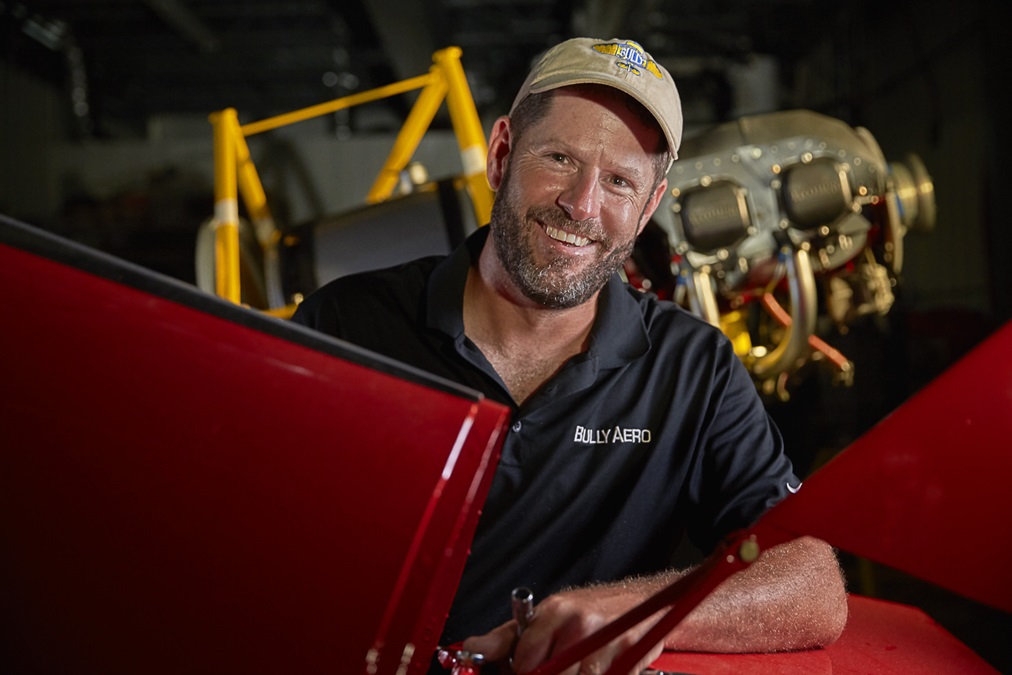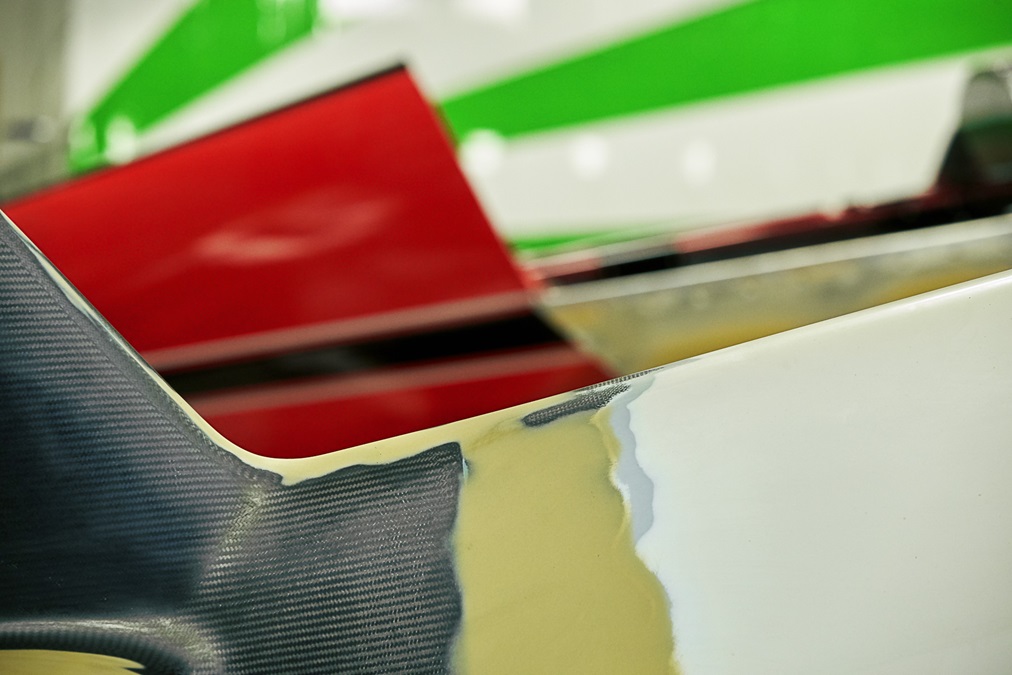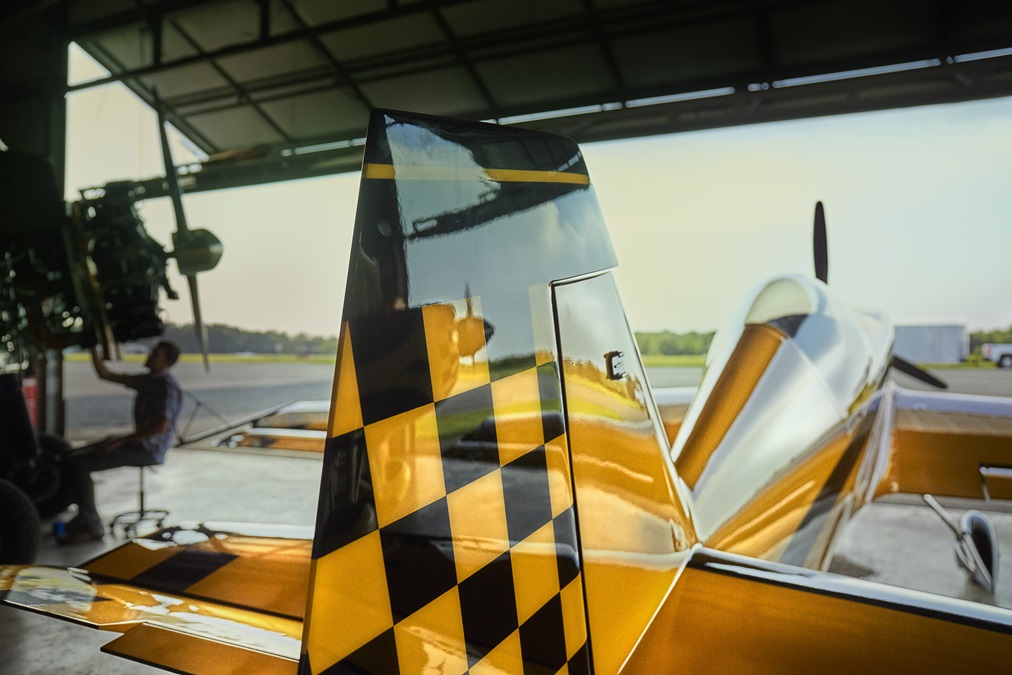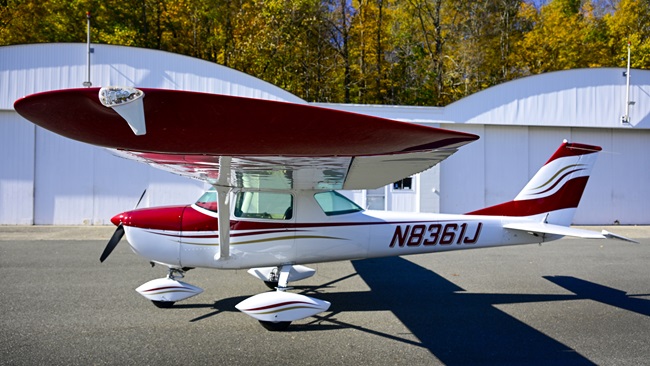TLC for Tortured Airplanes
Big names seek out Bully Aero
Minnis and his 22-year-old shop manager, Paul Rovegno, have been rubbing their hands raw on a couple of low-tech restorations—a clipped-wing Taylorcraft and a Pitts biplane—during a summer in which their best-known customers are performing at airshows, competitions, and races. It’s winter that is crunch time for Bully Aero, as some of the biggest names in airshow flying bring in their hard-charging aircraft for thorough inspections and modifications.
Mike Goulian, Rob Holland, John Klatt, and Bill Stein are repeat customers. Flags from the 24 countries where customers live cover most of a hangar wall.
Minnis is an accomplished aerobatic pilot in his own right. But he says he can barely bring himself to watch his customers perform, knowing—as he does intimately—the incredible forces and strains they impose on themselves and their airframes.
“Rob Holland is the king of the four-minute freestyle—and for him to perform at that level requires that he push his equipment, and he pushes it hard,” Minnis said. “I feel proud and humble when I watch him fly, but I’m also a little nervous. The environment these airplanes operate in is extreme.”
With broad shoulders and a full, scruffy beard, Minnis, 43, is physically imposing but affable and engaging. He smiles and laughs easily, and speaks softly with an understated Southern twang. Dressed in an Under Armour T-shirt, baseball cap, and threadbare shorts, his appearance is indistinguishable from others at his two-hangar shop at Burlington Municipal Airport in north-central North Carolina. Bully Aero is named for Minnis’ grandfather, a World War II PBY Catalina pilot, who got the nickname for his boxing prowess.
Minnis knew he wanted to be involved in aviation at age 9, when he saw a low-level formation flyby at his hometown airport. But he didn’t find a path to aviation until he’d turned in two semesters of indifferent academic results at college. Then he enrolled in a now-defunct South Carolina airframe and powerplant certification program, where he excelled.
He married and had children during his early twenties, and then worked extra jobs to pay for flying lessons. “I washed RVs, mowed yards, and moonlighted as an A&P,” he said. “I built up an aviation fund and became a private pilot in 1998.”
Minnis was hired by General Electric, where he worked on the jet engines that power Boeing 777s. He quickly joined and rose through the management ranks, learning about precision machining, aircraft and engine design and testing, and failure mode analysis along the way. He became an FAA-designated manufacturing inspector, and then after a decade at GE, he went to work for the FAA as a maintenance inspector.
A self-described computer nerd, Minnis dove into data analysis and came up with new ways to match FAA safety inspections with real-world risk factors. But he chafed at the slow pace of change within the bureaucratic agency. “Life at the speed of government was too slow for me,” Minnis said. “I felt like I was stuck in first gear. It became not challenging.”
When his FAA manager wouldn’t allow him to perform low-level aerobatics at airshows, Minnis resigned. Leaving the security of a government job after nine years to open a new aviation business was “scary as hell,” but it also felt right. “This was my dream,” he said. “I’d been preparing myself for it for years. Once I committed to it, I never looked back.”
Common sense
Minnis estimates that he spends 75 percent of his work time doing hands-on tasks such as designing, welding, machining, and fabricating. The other 25 percent is devoted to “business stuff,” the organizational chores that successful owners can’t ignore.
Even though he’s an experienced manager—or perhaps because of it—he spends almost no time actively managing employees or business partners. “The worst thing you can do to a trustworthy person is not trust them,” he said. “I don’t really manage people at all. I recognize the things they do exceedingly well, find exciting opportunities for them, and then stand back and let them excel.”
That’s not to say every project goes perfectly.
Adding winglets to Goulian’s Red Bull race airplane last winter, for example, required a tremendous amount of extra time and effort to get right. And Minnis was embarrassed once when, on a delivery flight in a customer’s immaculately restored airplane, the tailwheel fell off during the first landing.
“The tailwheel rolled past me on the runway,” he said. “It was a brand-new tailwheel assembly, but the manufacturer forgot to put a cotter pin in it, and we didn’t catch it.”
Now, nothing leaves the shop without at least two mechanics checking each other’s work, and every technician has a distinctively colored marker to show those who follow exactly who has checked that each fastener is properly installed and torqued. Minnis calls such procedures “the formal application of common sense.”
He said his worst moments come when he realizes that he’s made an error that sets back a project or disrupts other people’s schedules.
“I’ve left here some days feeling like I’ve let everyone down, and that’s not a good feeling,” he said. “But when we make mistakes we all come together as a team, and we go above and beyond to make things right. Sometimes that means doing extra work, staying late, and making other kinds of sacrifices. We learn, and that helps us in the long haul. And those are our best moments.”
“This was my dream. I’d been preparing myself for it for years. Once I committed to it, I never looked back.” —Eric MinnisMinnis has formed partnerships with specialists in composite fabrication and engine overhauls. Daryl Atkinson, a highly sought-after carbon-fiber expert in Formula One auto racing, has joined with Bully Aero on an extensive structural enhancement for Giles G–202 tails. An in-flight structural failure of a G–202 caused a fatal accident in 2015, and Minnis said more than 60 of the kit airplanes registered around the world could benefit from the carbon-fiber beef-up.
Two of the high-performance, two-seat Experimental airplanes are at Bully now, and others are on their way from Europe and Asia.
“We’ve taken a close look at how these airplanes were built, how they age, and how they can be modified and improved,” Minnis said. “Our guys don’t mind working on airplanes that don’t come with maintenance manuals. A great deal of the work we do is custom, and that’s how we prefer it. We’d get bored if all we did was production work.”
Minnis said he doesn’t hesitate to reach out to fellow craftsmen for advice or to help him think through technical issues. Steve Wolf, the Florida-based aircraft designer, builder, and record-setting pilot of many pioneering aerobatic aircraft, is providing guidance on the construction of a WolfPro 360 biplane. And the Kimball brothers, makers of the radial-engine Pitts Model 12, are trusted friends. No single craftsman is going to be the best at everything, Minnis said, so he finds expertise elsewhere when needed.
“I want my customers to get the best possible restorations,” he said. “Sometimes we can provide every aspect of that service in-house, and other times we reach out to people who have expertise that we don’t have. What matters is that the finished product is something we can all be proud of.”
‘This is my dream’
When a restoration or major maintenance job is complete, Minnis performs the first flight himself. After a G–202 tail mod, for example, he performs an aggressive sequence of maneuvers in which the airplane is flown beyond its never-exceed speed and subjected to a crushing 10 positive Gs.
“I’ve got to be sure that the airplane meets its design intent before it goes to the customer,” he said. “That means testing the airplane to the full range of what it was designed to do.”
Minnis and his team take a clear-eyed look at the known risks and develop a plan to accept, minimize, or eliminate them. His background in flight testing and failure analysis leads Minnis to create a detailed plan for each test flight and keep to it.
“There’s no improvisation,” he said. “We stick to the script.”
Most of Bully’s customers find out about the company through word of mouth. Aviation is a small town, and the aerobatic niche is a tiny subdivision within it. Bully doesn’t have a website, and its digital presence consists of a single, irregularly updated Facebook page. That lack of marketing is deliberate.
“I let our actions speak for themselves,” Minnis said. “That’s not easy to do sometimes. It requires patience.”
Looking forward, Minnis says the traditional business metrics of expanding revenue, market share, and profitability aren’t the best measures of his enterprise. “My goals are simply to surround myself with good people and be proud of the things we accomplish together,” he said. “We don’t need to be the biggest, or make the most money. We have a chance to be creative, to do things that really matter to our customers, and to be the best we can possibly be.
“If I won the lottery tomorrow, this shop would stay open,” he said. “This is my dream, and even though we work hard, the truth is that most days this really doesn’t feel like work at all.”
Email [email protected]


